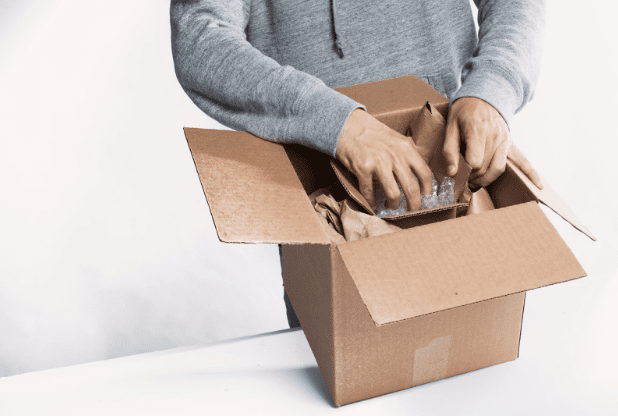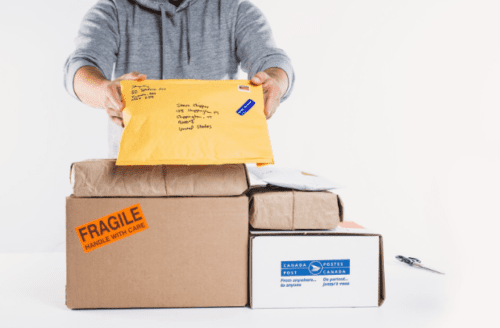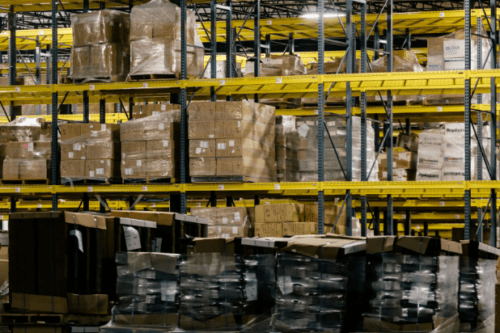Full Kitting: Process, Benefits, and Types

Kitting is a beneficial process that brings together individual components for assembly. It’s an essential step in the manufacturing process where every component is gathered for assembly, saving time and money. Kitting processes take place before the assembly line, gathering the components that are used to make the complete product.
However, kitting can mean different things depending on the industry, even if the underlying principle is still the same. In order fulfillment, for example, kitting means bundling together multiple products in a single kit, saving you and the customer time and money.
Kitting can even be used in a management context to ensure multiple teams have the resources and time needed to devote to a project so you don’t end up stressing over the workflow.
What Is Full Kitting?
Full kitting is short for fulfillment and refers to kitting in the order fulfillment process. Full kitting means packing multiple products and pushing them out under one SKU. The kitting process typically has three steps: gather the individual components, pack them together, and ship them out.
Suppose even one of the components isn’t available. In that case, kitting doesn’t start, as that will only lead to unfinished work and possibly break the products, which increases waste, the enemy of good order fulfillment.
Full Kitting Principles
Full kitting has some strict principles that help the process run smoothly without hiccups. It focuses on efficiency–bundling parts together and whipping them out as quickly as possible.
The first step is to store the kit parts near each other. This reduces the time workers spend running around the warehouse to gather parts.
The next step is to ensure all the parts needed to complete and ship the entire kit are readily available. If even one component of the kit is missing, the kit won’t be started. This lowers the number of works-in-process in the warehouse, which reduces double set-ups and double handling, resulting in fewer damaged products.
Once it’s confirmed that all the items needed for the kit are available, pickers gather the products and bring them to the designated assembly area for packers to assemble into a complete kit.
That kit is then shelved until it’s time to ship it out. The process is seamless, from beginning to end, so the whole kit is immediately put together and ready for shipping, which is the most critical aspect of the process.
Benefits of Full Kitting
Full kitting is extraordinarily useful, primarily if you use a lean production model or have supply chain issues. It can streamline your fulfillment process, give you a strategic competitive edge, and increase sales, leading to a higher manufacturer’s profit margin.
Fulfillment Accuracy
Humans are prone to error, especially when rushing. Good full-kitting policies can considerably reduce shipping errors and service operation mistakes. Having several work-in-process packages scattered about the warehouse only increases order fulfillment errors.
After all, what items you need for a work-in-process are all readily available. The picking and packing process couldn’t be easier as everything workers need is nearby and ready to be packed and shipped.
Shorten Lead Time
If all the items are available and it’s clear what goes where, lead time gets significantly shortened as all the workers need to pack the items up and ship them out. As soon as the order comes in, workers can have it packed and ready as quickly as possible, leading to short wait times for customers.
This shorter waiting time can give your business a significant edge over the competition. Faster shipping times for the same, or lower, prices is undoubtedly a dealbreaker for many consumers.
Besides lowering shipping costs, shorter lead time saves time for employees and other workers, meaning they can put more time into shipping more orders rather than busywork while they wait for the missing components they need.
Several WIPs (work-in-process) mean double handling, and more handling often leads to broken or damaged products you can no longer sell. That’s why it’s best to implement full kitting, which shortens the time it takes for a WIP to be completed. The number of damaged products can decrease.
Increase Sales
Besides saving time, you can also make more money with full kitting. For example, suppose you have an excess capacity for an underperforming product. In that case, you can bundle it together with a high-performing product, then sell the bundle for more than either of the items.

It helps you get rid of dead stock while simultaneously turning that stock into profit. Product kitting can help bundle stock into a single kit, and then you can charge more for the single kit than either of the items on their own.
Or, if you’re more focused on getting rid of stock, advertise that buying the items in a kit is cheaper than buying them separately. This is a common tactic to increase sales on kits, yet still make a decent profit considering the lower shipping costs.
Business Expansion
A full kitting process or policy can help you expand your shipping operations and your business as a whole. It can increase your profit margins, and with increased throughput, you can focus on developing the size and scope of your business.
However, when setting your policy and business rules, remember the basic principles of full kitting, as it helps fulfill orders and manage projects on the other side of the business spectrum.
Only start if you have all the individual components you need to complete the project, which includes each team’s time and attention. Once you’ve mastered the principles of kitting, your business will become just as efficient as your warehouses.
Kitting Software
Kitting software can also help you improve inventory management. Kitting software keeps track of all the multiple SKUs that go into a single SKU as a kit. It should tell you the inventory for each item and how many kits you can make with what you have on hand.
Like other necessary inventory software, kitting software should tell you when you’re running low on specific items or the maximum amount you should have on hand. Still, this software also considers what goes into the kits when crunching the numbers, giving you a more accurate number than regular inventory software.

Another vital aspect of full kitting is that it helps reduce the space needed for inventory, as kitted products take up less shelf space than the individual components. Plus, minimizing the number of WIPs on the floor can save space in the assembly area and increase throughput.
Types of Full Kitting in Order Fulfillment
There are several different types of kitting processes. These include the full kitting process, product kitting, where products from the same manufacturer are grouped, and highly customized kitting, where the individual components are particular to each customer’s orders. Other kitting processes help deliver customers what they need while keeping costs low and profits high.
Private Label Kitting
The private label kitting process is where different products from different manufacturers are gathered together under a separate personal label.
In private label kitting, manufacturers typically ship out their products to another business. That business then gathers the different products together and sells them under their name.
An excellent example is back-to-school kits. Pencils, pens, notebooks, crayons, and markers from different brands are all shipped and sold in a single package, so the person kitting them together reaps the profits from the kit, even if all the products are from someone else.
This is a popular form of full kitting for seasonal or hobby items. By offering everything they need in a complete kit, consumers are more likely to choose your product rather than gathering all the products they need. It saves them time and money.
Promotional Fulfillment
Promotional fulfillment is where you place promotional materials with the customer’s order. It’s essentially targeted advertising to try and get repeat customers.
If you’ve ever opened a package and found a small card with the company’s related products or a thank you, you’ve received promotional fulfillment.
Promotional fulfillment is useful for thanking customers for their purchases or suggesting related products that would go well with those purchases. Customers love to be appreciated, and they’re more likely to buy another product from you if they like your product.
You have already won half the battle by convincing them to purchase one of your products, and promotional fulfillment can help create loyal customers who buy multiple products.
eCommerce Fulfillment
eCommerce fulfillment is the fulfillment of orders by eCommerce businesses. You already know one example: putting underperforming stock in a bundle and marketing it to customers. However, eCommerce brands can do much more than just that.
Subscription boxes have recently become a fad and are rapidly becoming a mainstay of eCommerce businesses. Rather than purchase different items every month, customers buy a subscription box that gathers the items they want and ships it to them automatically.
Pet subscriptions are a great example. Pet owners purchase a subscription box with treats, toys, and other pet items for their beloved companions every month. They get different toys and treats with every package, so their pets never get bored.
As you can see, this can sneak into private label fulfillment territory, where an eCommerce business can gather different brands and manufacturers into one box to please their customers.
Another good example is Amazon. Amazon tries to ship your order in as few boxes as possible. They group the items you order as a kit, then go through the kitting process to ship your order quickly and efficiently. eCommerce can take a page out of their book and give special deals to customers buying multiple products to save space and time when shipping.
Dunnage Kitting
Another essential type of full kitting is dunnage kitting. When you ship valuable items that can easily be damaged in transit, you want some form of dunnage, like paper crinkles, styrofoam, or cardboard walls.
Keeping the right dunnage on hand for specific kits is an essential aspect of the kitting process, not just a particular form of full kitting.
Third-Party Kitting Services
Multiple third-party logistics partners are willing to do the shipping work for you. These 3pl companies take care of the order fulfillment while you send in the orders and addresses:
- Saddle Creek Logistics Services: Saddle Creek offers omnichannel fulfillment, warehousing and transportation through a nationwide network of strategic locations and integrated technologies.
- SEKO Logistics: SEKO Logistics provides order fulfillment and warehousing services through a global infrastructure composed of multi-user logistics facilities. This business model enables SEKO Logistics to stock items and fulfill orders quickly and cost efficiently in local markets.
- Red Stag Fulfillment: Red Stag is a fulfillment company with most orders reaching customers within three days, usually less.
- Blue Cart: Blue Cart focuses on eCommerce fulfillment and other online fulfillment processes.
- Efex: Efex is the jack of all trades in full kitting and fulfillment, including ECommerce, B2B, and manufacturing.
- ShipBob: ShipBob doesn’t just handle the warehousing, kitting, and shipping part of the business; it offers software and experts who can help with inventory needs.
These third-party logistics partners all offer excellent complete kitting services that any manufacturers or businesses can take advantage of. They have reasonable prices and efficient shipping procedures and can help you with any fulfillment needs.
Full Kitting: Many Benefits, No Drawbacks
Full kitting is a powerful tool in any business owner’s toolbelt. It can help sell dead stock, increase profits, and shorten lead and shipping times. Taking advantage of full kitting and its principles can help any warehouse grow more efficient and give you an edge over your competition.
If you’re interested in the kitting process, you can contact a 3pl company to learn more about the kitting services they offer and how they can benefit your business. So if you want to lower stock or reduce shipping times for customers, full kitting will likely get you there and take your business to the next level.
